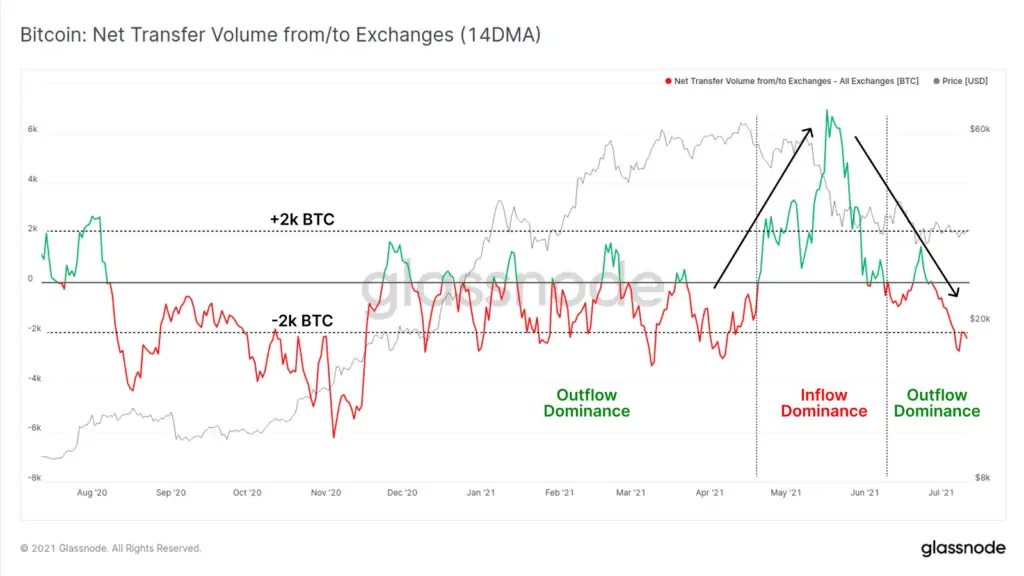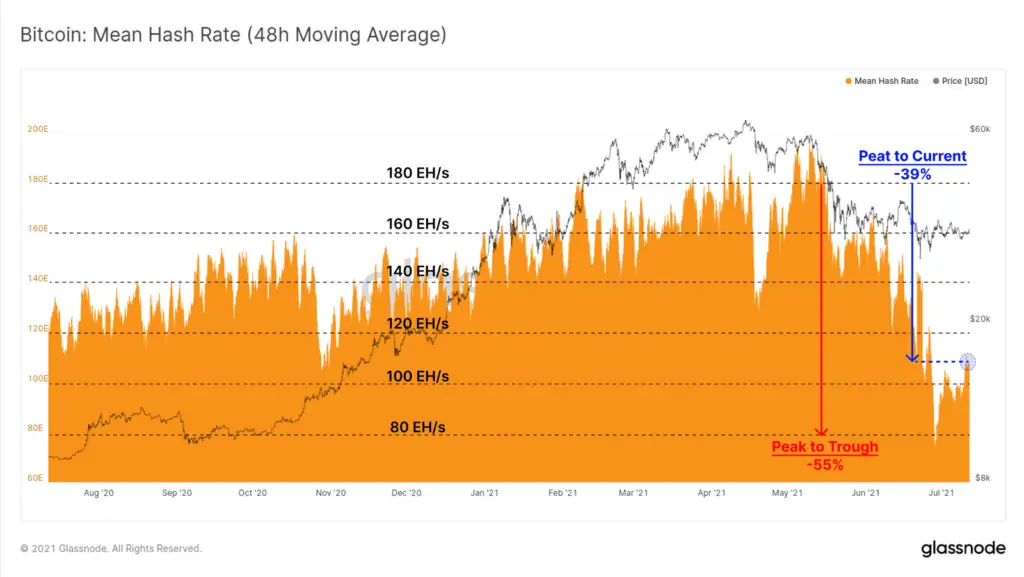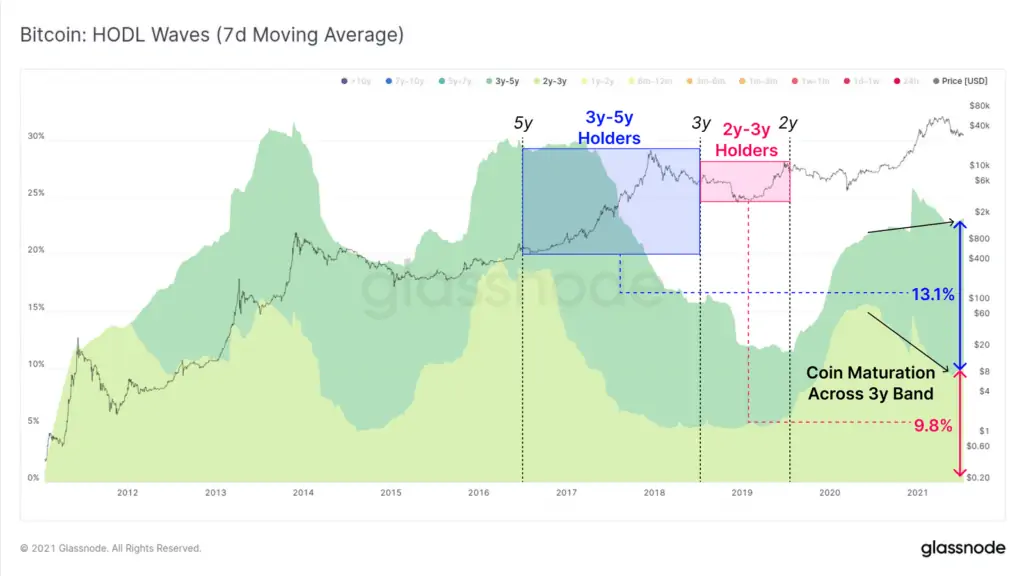GlassNode analysts report that Bitcoin investors are withdrawing around 2.000 BTC from centralized exchanges every day, while the network's hash rate has rapidly recovered over the past week.
El weekly report No. 28 from GlassNode, a leading on-chain market analysis firm, shows the on-chain activity and several of the important events that have taken place on the Bitcoin network this week. First, it indicates that the exit of cryptocurrencies, bitcoins from platforms exchanges continues significantly.
Bitcoin investors continue to withdraw their assets from centralized platforms. On average, over the past two weeks investors have been withdrawing about 2.000 BTC per day from cryptocurrency exchanges, as data from GlassNode shows.

Source: GlassNode
According to the report, this activity contrasts with what was seen in May, when BTC's falling value led investors to take their cryptocurrencies to exchange platforms for liquidation. In the past 3 weeks, exchanges have seen nearly 40.000 BTC leave, which represents approximately 28% of the total cryptocurrencies that had entered these platforms in the month of April. Now, centralized exchanges hold approximately 2,56 million of the BTC in circulation, GlassNode indicated.
El hash rate The network's growth is another activity that GlassNode has been following closely this week. According to the firm, Bitcoin's computational power has stabilized over the past week, suggesting that a portion of the BTC miners, that left China have been able to relocate their equipment to other jurisdictions, reestablishing connections.
It may interest you: Bitcoin Whale Movement Takes Cryptocurrency to New Highs
Analysis of Bitcoin's on-chain activity
Hash rate recovery
A quick recovery in Bitcoin’s hash rate may suggest that disconnected miners have been able to successfully relocate and reconnect their hardware, bringing stability to the network, GlassNode analysts noted. According to the chart, Bitcoin’s hash rate is currently above 160 EH/s — a recovery of at least 12% since its last drop earlier this month. By April of this year, Bitcoin’s hash rate had hit an all-time high of 210 EH/s, according to GlassNode.

Source: GlassNode
GlassNode indicates that the recovery of the network's computing power may also be related to the reconnection of old mining equipment, which with the drop in hash rates at the beginning of July saw a new opportunity to mine the cryptocurrency.
The data from Blockchain.com, another major on-chain data provider, contrast somewhat with those of GlassNode, although they also show a significant recovery for the network's hash rate. Stability in computing power has led miners to return to accumulating mined bitcoins.
Chain activity and commissions
On the other hand, GlassNode analysts indicate that on-chain activity in Bitcoin has decreased, as the cryptocurrency has been experiencing a relatively “quiet” couple of weeks.
The price of BTC has been fluctuating between $32.220 and $35.130 per unit. With relatively low volatility like this, the number of transactions accumulated in the mempool has also decreased. This, in turn, has reduced the network's commission fees, which are currently between 1 and 15 satoshis (sat) per transaction. In dollar terms, Bitcoin fees are around $0,05 and $0,68, according to Mempool data.

Source: Mempool.space
Bitcoin Derivatives
Open interest in bitcoin futures remains static. According to analysts, trading volumes on bitcoin derivatives platforms continue to decline, suggesting a lower investor appetite for leverage.
Since April, when open interest in bitcoin futures was close to $30.000 billion, derivatives markets have seen a 57% drop. Currently, open interest remains between $10.700 billion and $13.000 billion.
Trading volumes on Bitcoin futures markets also declined, approaching $45.000 billion traded per day. By the end of May, trading volume on these markets exceeded $120.000 billion, GlassNode said.
More HODLing in Bitcoin
GlassNode also analyzed the behavior of Bitcoin investors, noting that older wallets remain dormant, a sign that more experienced cryptocurrency investors continue to HODL their digital assets. On the other hand, investors with newer wallets are the ones selling their holdings.
The firm also notes that older investors continue to buy Bitcoin's dip in order to accumulate more cryptocurrencies.

Source: GlassNode
In summary, GlassNode data shows that there is little activity on the Bitcoin network at the moment, although several signs of recovery, such as the rising hash rate and miner accumulation, may suggest more positive movements for the coming days.
Continue reading: More than 2 million users have used DeFi since 2018, GlassNode reveals




